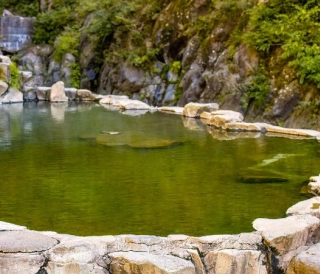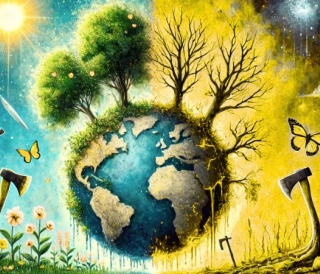Retreat to Nature – Where Sustainability Meets Serenity
06-03-2025 00:00
An Overview of the Retreat Concept
A retreat is a form of wellness travel that blends nature, tranquility, and holistic care—nurturing both physical and mental well-being.
Unlike conventional tourist resorts, retreats focus on bringing guests back to balance, offering deep relaxation through activities such as meditation, yoga, organic spa therapies, mindful eating, and immersion in natural surroundings.
The word “retreat” originates from English, meaning to “withdraw” or “step away”—especially from the noise and pressures of modern life.
Historically, retreats were rooted in religious traditions such as Buddhism, Christianity, and Hinduism, where individuals left behind worldly distractions to focus on introspection and spiritual growth.
Over time, this concept has evolved into a modern wellness model that integrates physical care, mental healing, and environmental mindfulness.
What sets retreats apart is their commitment to eco-conscious design—embracing natural materials, limiting ecological impact, and honoring the landscape.
Retreats are typically located in mountain regions, coastal hideaways, or forest sanctuaries, allowing guests to fully surrender to stillness, reconnect with nature, and find inner peace.

Eco-Friendly Retreats: A Sustainable Living Model
Eco-friendly retreats are designed with the goal of minimizing environmental impact while promoting a sustainable lifestyle. This model is guided by several key principles:
-
Use of natural and recycled materials: Eco retreats are often built with wood, bamboo, stone, and other biodegradable materials that blend harmoniously with the surroundings.
-
Renewable energy sources: Solar panels, wind turbines, and small-scale hydropower systems are prioritized to reduce dependence on fossil fuels.
-
Organic and healthy food options: Meals are typically made from organic ingredients, locally sourced produce, and are served with minimal plastic waste—supporting both health and the local economy.
-
Waste reduction and recycling: Practices such as greywater recycling, plastic-free products, and waste separation are commonly implemented to support a circular ecosystem.
-
Nature-integrated design: Eco retreats emphasize open spaces, natural lighting, and green architecture. Structures are designed to coexist with the surrounding environment, often located in forests, by the sea, or in the mountains, enhancing the sense of peace and ecological mindfulness.

Global Trends in Retreat Development
Integrating Holistic Wellness Experiences
Modern retreat resorts go beyond rest and relaxation by offering comprehensive wellness programs—including yoga, meditation, spa therapies, and natural healing treatments.
According to the Global Wellness Institute, the global wellness tourism industry reached USD 639 billion in 2023 and is projected to continue strong growth in the coming years.
Nature-Centric Design
Many retreat destinations are built in quiet, pristine locations close to nature, offering guests fresh air, open spaces, and a deep sense of calm.
A study by Booking.com found that 82% of travelers prefer accommodations with sustainable and eco-friendly features.
Emphasis on Environmental Conservation
The trend of combining retreat experiences with conservation efforts is becoming essential—adding meaning and uniqueness to the travel experience.
According to the UN World Tourism Organization (UNWTO), 40% of global travelers now prioritize destinations that are committed to environmental protection.
Growth in Vietnam
In Vietnam, the retreat trend is also gaining momentum, with many resorts focusing on health and spiritual wellness for their guests.
A report from the Vietnam National Administration of Tourism shows that demand for wellness tourism in Vietnam has grown by 25% over the past five years.

Pioneering Countries in the Global Retreat Movement
Japan is renowned for its onsen retreats, where natural hot springs are combined with meditation therapies to help guests release stress and restore mind-body balance.
Thailand has become one of the world’s most dynamic retreat destinations, offering a wide range of resorts focused on meditation, yoga, detox, and natural healing.
Places like Chiang Mai, Koh Samui, and Phuket are ideal for those seeking inner stillness and spiritual renewal.
India, the birthplace of yoga and meditation, continues to attract wellness travelers to its traditional ashrams in Rishikesh and Kerala, offering immersive retreat experiences rooted in centuries-old wisdom.
Costa Rica is often hailed as a retreat paradise, with eco-lodges nestled in pristine rainforests that integrate yoga, meditation, and natural therapies, offering a complete reconnection with nature.

Applying the Retreat Model in the Vietnamese Context
Vietnam holds immense potential to develop the retreat model, thanks to its diverse natural landscapes—from majestic mountains to stunning beaches. To apply this model effectively, several key strategies should be considered:
-
Sustainable use of natural resources: Retreats should be designed in harmony with their surroundings, using local materials and renewable energy to reduce ecological impact.
-
Integrating local cultural experiences: Guests can engage in activities such as meditating with monks, enjoying organic vegetarian cuisine, or exploring traditional Vietnamese healing practices.
-
Building holistic wellness programs: Vietnamese retreats can offer a balance of yoga, meditation, natural spa treatments, and detox programs—helping visitors restore their inner equilibrium and reconnect with themselves.
Retreats are not just a vacation trend—they represent a lifestyle rooted in balance, mindfulness, and ecological respect.
With its natural assets and rich culture, Vietnam has every opportunity to become a leading retreat destination in Southeast Asia, offering meaningful, sustainable experiences that resonate long after the journey ends.
Tuệ Minh
Seeking Climate Justice: Acknowledging Historical Truths
On World Environment Day, Professor Joyeeta Gupta (simulated) offers a powerful lens through which to examine the global climate crisis—one grounded in historical truths and justice. She argues that climate change is not merely a consequence of industrial development or population growth, but the product of a fundamentally unjust and unsustainable development model rooted in colonial legacies.
Balneotherapy: The Natural Art of Water Healing
Balneotherapy, the ancient art of healing through mineral-rich waters, mud, and steam, has stood the test of time—blending centuries-old traditions with modern wellness practices. From easing joint pain to refreshing the mind, it offers a natural path to health that’s both restorative and deeply rooted in nature.
The Green Planet – Plants on Earth
Earth, our "green planet," is the home where life has developed and evolved over billions of years. Within Earth's complex ecosystems, plants play a central role, not only as a source of life for countless species but also as a crucial factor in maintaining planetary balance.
Khe Sanh in March – The Hills Where Coffee Flowers and Fruit Awaken Together
Khe Sanh – Where Nature and Daily Life Flow as One
When March arrives, Khe Sanh awakens in a dazzling display of blossoms and scent.
This land, quiet and humble for most of the year, bursts into color with the pure white bloom of coffee flowers and the vibrant red ripening of jackfruit coffee berries.
It’s not just a season—it’s a living canvas where nature and people breathe in harmony, painting the hills with fragrance, light, and life.






